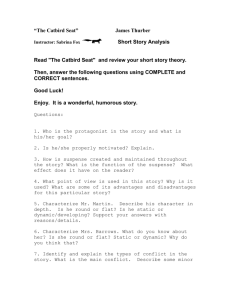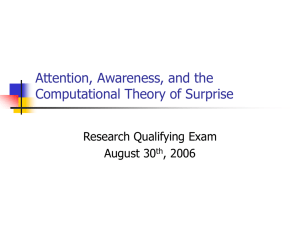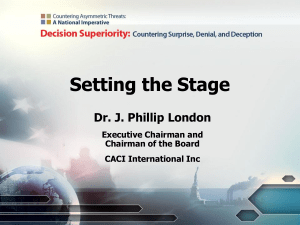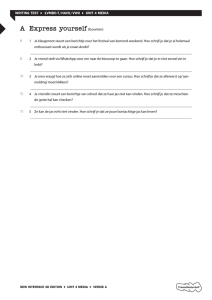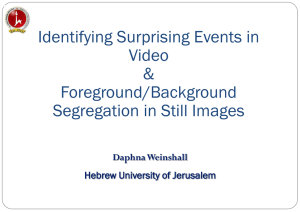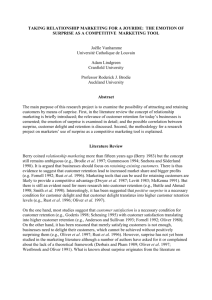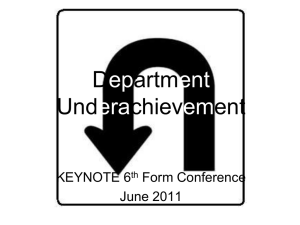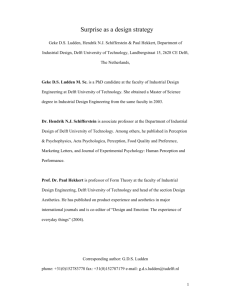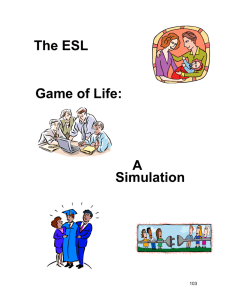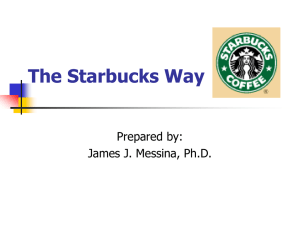appreciating the unpredictable – PSY WS 2010
advertisement
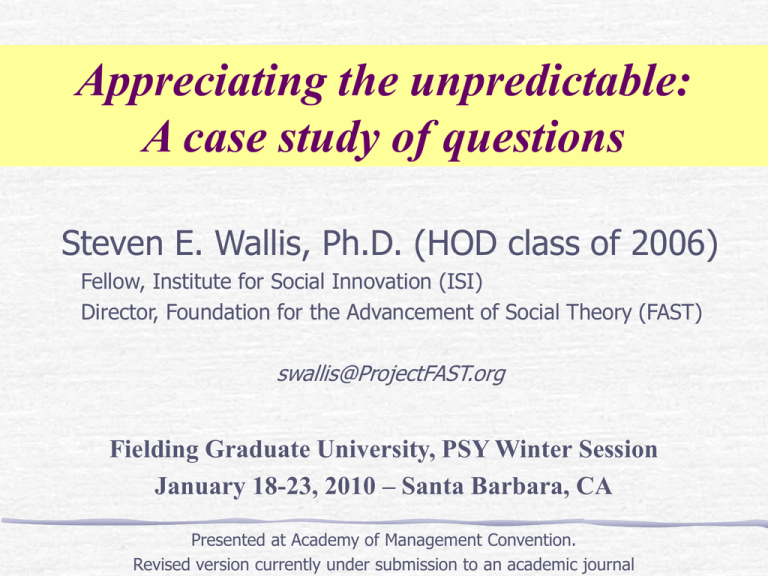
Appreciating the unpredictable: A case study of questions Steven E. Wallis, Ph.D. (HOD class of 2006) Fellow, Institute for Social Innovation (ISI) Director, Foundation for the Advancement of Social Theory (FAST) swallis@ProjectFAST.org Fielding Graduate University, PSY Winter Session January 18-23, 2010 – Santa Barbara, CA Presented at Academy of Management Convention. Revised version currently under submission to an academic journal HOD – PSY Connection In this engagement, we primarily relied on individual interviews (common to HOD and PSY). Our conclusion suggests that there may be useful techniques for encouraging surprise. And, that surprise may be linked with successful action, instead of discomfiture and dysfunctional response. This suggests an opportunity for learning that is of relevance to (at least) two of Fielding’s schools … and, the opportunity for collaboration… 2 Abstract A case study is presented describing a consulting engagement where three organization development consultants help a small manufacturing firm heal a rift between management and labor by facilitating the creation of a shared values statement. While some results were to be expected, others were rather surprising. The insights from this experience suggest a relationship between engagement style and the amount of “successful surprise” that emerges within the client organization. 3 In This We Used A Variety of Techniques Including: Semi-structured, open-ended interviews. Facilitated group discussions (including brainstorming and related techniques). The Action Research cycle. Self-reflection by consultants (and using all these techniques within our consulting team). 4 History of the Engagement 1. 2. 3. 4. 5. 6. Conversations with management team to learn the situation and teach them about our process. Semi-structured interviews with each manager provided a wealth of qualitative data. Management team worked with interview data to choose a focus (to develop a values statement). Group development of draft values statement. Group discussions by employees to review and discuss values statement. Management finalized values statement. 5 Predictable Results Interviews surfaced useful data on the state of the organization. Management decided to create a values statement as a tool to alleviate labormanagement tensions. The statement was created by a facilitated collaborative effort. 6 Labor relations are improved. ZAP’s values were defined as: Recognizing the global environmental crisis, ZAP is committed to: Creating a world that utilizes non-polluting transportation Promoting personal ethics and social responsibility Financial success without compromising company core values Being an exciting, fun and innovative workplace Challenging the status quo by continually expanding personal, social and environmental limits Creating quality products that exceed customer expectations 7 Yet… achieving desired goals leads to unanticipated outcomes 8 Surprising Results The production supervisor resigned A manager was promoted to Chief Operations Officer These unexpected results seem directly related to our activities. And, may be more significant than the more predictable results! 9 Nature of Surprise “Surprise challenges us and upsets us. Our natural desire to have the world be a predictable place and to be in control of situations as they unfold can lead to dysfunctional responses to surprise.” “… surprise is not necessarily the result of bounded rationality, limited information, or system design, but often is the result of the fundamental nature of the system in question.” 10 MIND-SHIFT If surprise is fundamental, why work against it? What might we do to create MORE (and more successful) surprise? 11 Our Actions That Appear to Support Surprise: 1. Timing – We allowed ample time between planned activities for unplanned things to happen. This allowed (perhaps encouraged) individual managers to contemplate and act as individuals. 2. Asking questions – As a way to encourage client to consider their situation (past, present, future alternatives). 12 More Actions That Appear to Support Surprise: 3. Scaffolding – Ask questions in a progressive order. Thus, each answer opens the client to the next step. 4. Shifting levels – Move client’s perspective between individual, team, corporate – and back again. 13 Extentions The present paper is not meant to be a conclusive study; rather, it is an opening to a broader conversation on how uncertainty might be understood as an inevitable aspect of individual & organizational life; and, how that uncertainty might be increased for the benefit of human systems – both known and unknown. 14 Opportunities for Research How well can we experts “let go” of our need to control outcomes? How might we teach that to clients? What is the relationship between the techniques we use, and results that are: predictable/unpredictable? good/bad? quantity/style of surprise? pleasant or unpleasant? How are results different for various individuals and groups? 15 Appreciations I wish to thank my collaborating consultants, Dan Kaupas and Robyn Tureman, for their questions, answers, and efforts. My thanks to ZAP for their willingness to work with us on this project. I greatly appreciate the School of Psychology for their openness to this poster session as a “cross-pollination” between the HOD & PSY schools of Fielding Graduate University. 16
